KoreaS have instituted a holiday to celebrate the creation of their alphabet called "Hangeul" in South Korea and "Chosŏn' gŭl" in North Korea. This national holiday takes place today (09 Oct 2018) in the southern peninsula - it’s an opportunity to discover the fascinating history and mysteries behind this alphabet unlike any other...
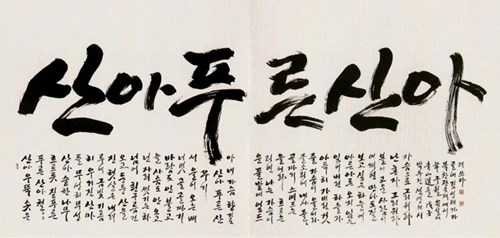
Korean, the language of the aristocracy
Until the 15th century, Korean was a purely oral language, whose writing science was the prerogative of the aristocracy and the high administration. Indeed, the system of transcription from Korean into Chinese characters, the Hanjas, was composed of tens of thousands of characters with very complex teaching, thus explaining the elitism of its mastery.

Sejong the Great, creator of the Korean alphabet
Sejong the Great, the fourth king of the Korean Joseon dynasty (in power from 1418 to 1450), sees the reason for the population's widespread illiteracy. His solution? Establish a proper and simple Korean alphabet. In a Confucian tradition of sovereign scholarship, he consulted many scientists and linguists and developed the "Hunmin jongum" in 1443 – translated as the "correct sounds for the education of the people".
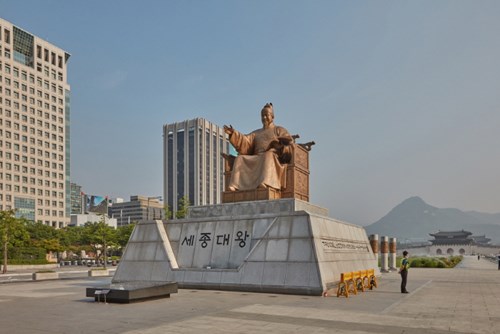
The King Sejong Statue was erected at the center of Gwanghawmun Square on Hangeul Day (October 9) of 2009.
But this writing was criticized and despised by the Elite and the intellectuals of the time until it was officially banned in 1504 by Yeonsangun, the successor of Sejong the Great. However, the alphabet has gradually been used among the lower categories, who saw it as their only way to write and communicate Korean.
The history of the alphabet echoes the history of Korea
The alphabet was not rehabilitated until 1894. Indeed, this period corresponds to the Japanese occupation and the corresponding administrative reform aiming at eradicating all traces of the Chinese administrative system from the peninsula. Modern Korean thus becomes the official language, replacing traditional Chinese. It is adopted in administrative documents and taught at school.
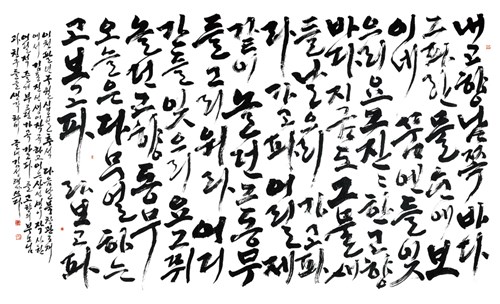
The term hangeul was first used in 1912 and means "writing of Korea" in modern Korean.
The alphabet was not really generalized until after the Second World War. Indeed, the hangeul is one of the symbols of resistance against Japan. The two Koreas quickly had the highest literacy rates in the world at that time.
The most scientific writing system in the world
Let's now discover the particularities of the alphabet. The hangul consists of a total of 40 letters, called jamos, including 19 consonants and 21 vowels. You must remember the five basic consonants: ㄱ, ㄴ, ㄴ, ㅁ, ㅅ, ㅇ, from which the other 14 are formed.
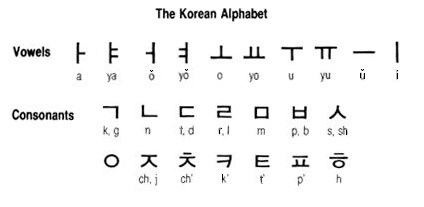
The originality of the writing is as follows: the design of the characters corresponds to the shape of the mouth or language to pronounce the corresponding sound! See instead: The jamosㄱ[pronounced "k"] and ㄴ[pronounced "n"] represent the form of the language at the time the sounds "k" and "n" are produced respectively. The jamo ㅁ[pronounced "m"] is a symbol of the lips touching each other to pronounce the sound "m". The same is true for jamoㅅ[pronounced "s"] which represents the contact between the teeth necessary to produce the sound "s". Finally, the jamo ㅇ[pronounced "ŋ"] simply represents the shape of the mouth when pronouncing the sound. Amazing, isn't it?
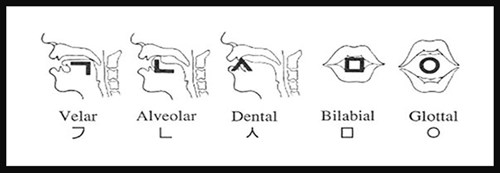
From then on, the other 14 consonants are versions of these 5 sounds, depending on whether it is sucked in, pressed, etc. Example: from the jamo ㅅ "s", we find the jamo ㅈ whose horizontal line represents the sound "t" pronounced before the sound "s", which gives the pronunciation "ts". For jamoㅊ the horizontal line represents the aspiration added to the sound "ts" giving "cʰ". And so on and so forth.
The celebration of the alphabet
Both Koreas have instituted a holiday to celebrate the creation of their alphabet. However, if they share the same language, they do everything differently: the alphabetical order is not the same, we speak of the "Hangeul" alphabet in South Korea but not of the "Chosŏn' gŭl" in North Korea and we commemorate them on different dates, October 9th in the South and January 15th in the North.

Do you know what is the Mid Autumn festival in Vietnam? Check it out here!








